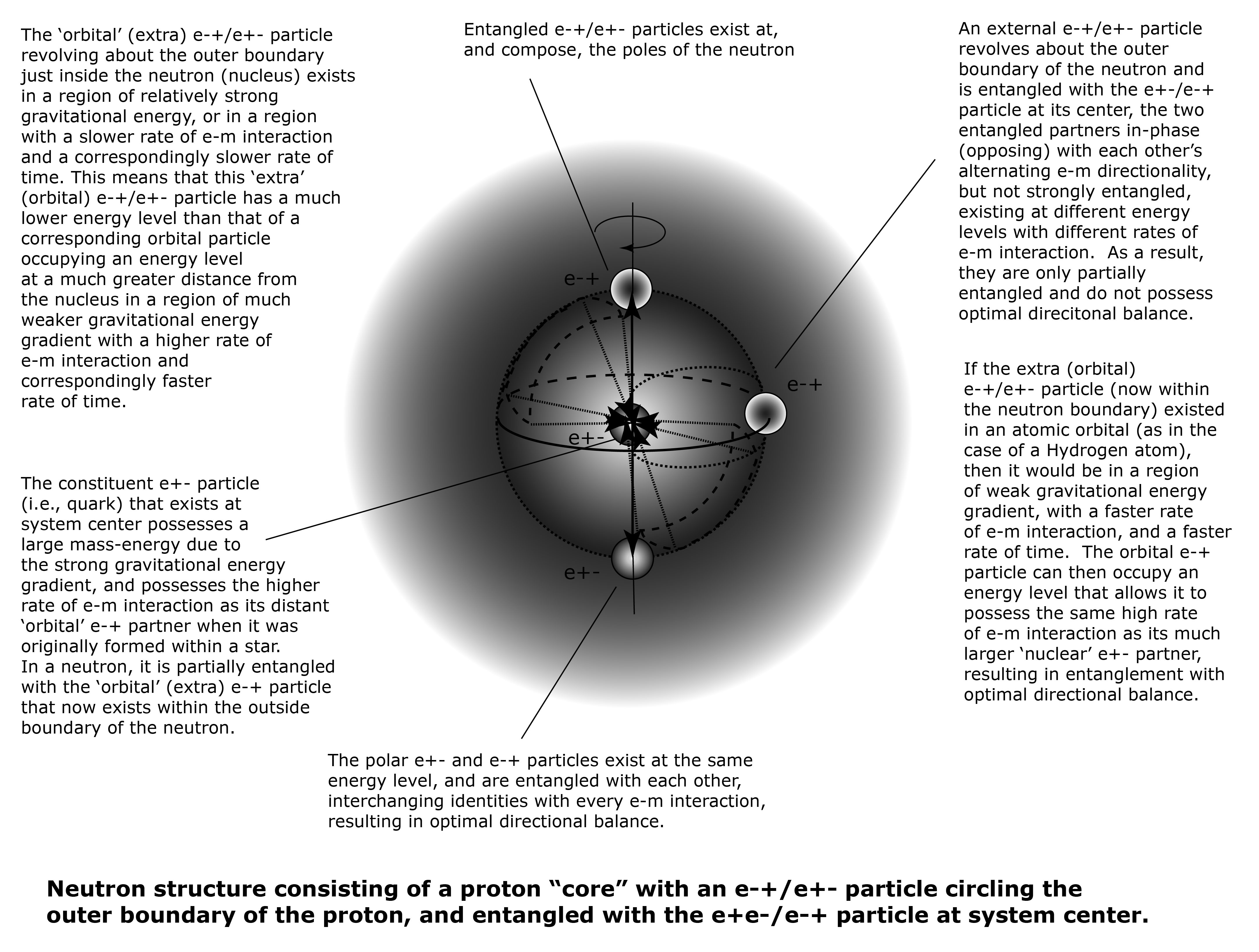 Neutrons consist of a proton core with an additional e-+ particle occupying an energy level within the proton boundary. At ‘moderate’ or ‘low’ pressures and temperatures (i.e., as compared to conditions at the core of a star), a neutron does not have a stable internal structure. However, its 4 constituent e-+/e+- particles are all entangled and provide some directional balance for each other.
Neutrons consist of a proton core with an additional e-+ particle occupying an energy level within the proton boundary. At ‘moderate’ or ‘low’ pressures and temperatures (i.e., as compared to conditions at the core of a star), a neutron does not have a stable internal structure. However, its 4 constituent e-+/e+- particles are all entangled and provide some directional balance for each other.
But the ‘additional’ or ‘excess’ e-+ particle is approximately the size of an ‘orbital’ e-+ particle, but now has lower energy since it exists within a region of strong gravitational energy gradient with a slower rate of e-m interaction and time. And it is entangled with its much larger e+- nucleon partner (at system center) that possesses a higher rate of e-m interaction. As a result, the ‘excess’ e-+ particle (aka, ‘extra’ or ‘orbital’ e-+ particle) can only be partially entangled with its much larger e+- nucleon partner. For example, if the nucleon e+- particle goes through 10 e-m interactions/unit time, and the ‘orbital’ (extra) e-+ particle (now occupying an energy level within the proton boundary) goes through 1 e-m interaction/unit time, then the nucleon e+- particle is only entangled with its ‘orbital’ (extra) e-+ partner 10% of the time. This ‘partial’ entanglement does not provide optimal directional balance to the two e+-/e-+ particles, and is unstable. The two entangled particles will move to a more stable relationship and structure at the earliest opportunity.
This sets the stage for eventual neutron ‘decay’ or disentanglement of the nucleon e-+/e+- particle from its ‘orbital’ (extra) e-+ partner …. yielding a proton with the emission of an orbital e-+ particle and antineutrino. This ‘decay’ may be initiated by an interaction of the neutron with a proton to form a Hydrogen molecule in the process.
